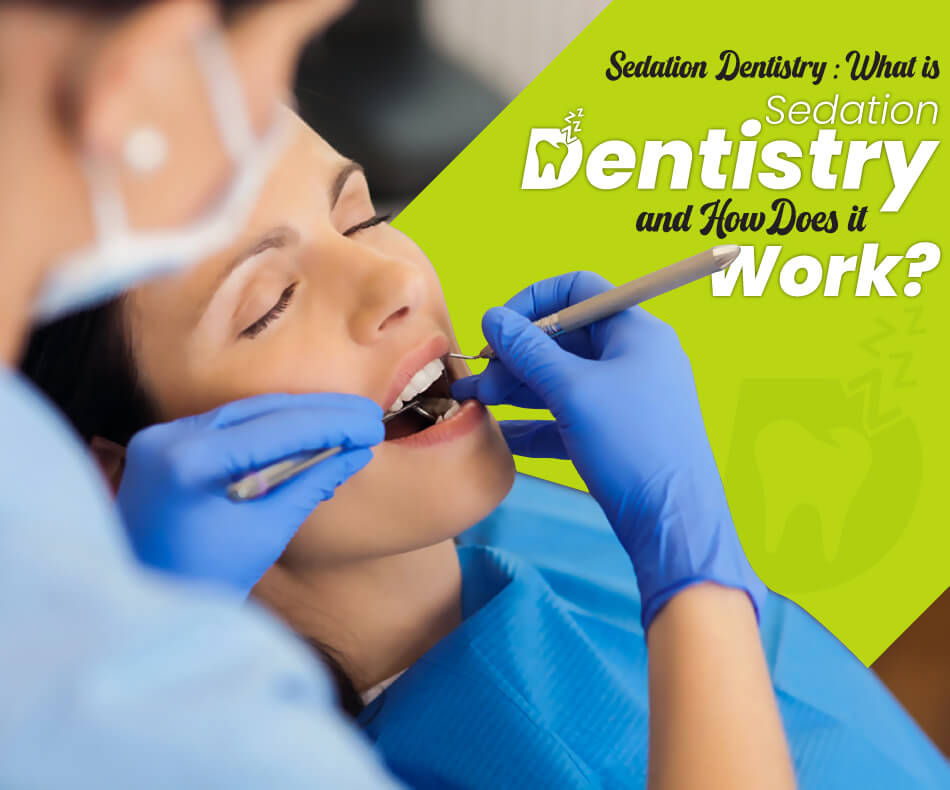Are you afraid of dental treatment and always try to avoid visiting a dentist? Well, here’s the solution. In this article, we will explain sedation dentistry thoroughly and how it works.
Dental phobia and dental anxiety are common in children and adults. Usually, people refuse to continue treating dental problems like gingivitis, root canal, and enamel erosion because they are too phobic to get a dental checkup. But can we avoid this? Yes, with the ride type of sedation, everything will be okay.
1. What Is Sedation Dentistry?
Sedation dentistry includes several medications given to feared patients during dental procedures. It is slightly different from general anesthesia because people are usually awake during the treatment. Sedation dentistry is a form of conscious sedation that keeps people relaxed during painful and lengthy dental treatments.
Unlike anesthesia, you don’t fall asleep, but you are aware of the surroundings to some degree and can respond to verbal commands and gentle nudging. In sedation dentistry, medications temporarily numb your pain receptors which bring insensitivity to pain and make you feel restful and relaxed without being unconscious.
However, sedation dentistry should be given by experienced dentists who have completed the Commission on Dental Accreditation (CODA) program in deep sedation. An orthodontist should recommend sedation dentistry only to patients with less pain threshold, very sensitive teeth, strong gag reflex, and those who need longer or multiple procedures.
Toothache itself might be terrific for you, and thinking of its treatment may make your entire body tense with fear. But now, you don’t need to fret over it because scientists have discovered an excellent solution to reduce your fear and keep you comfortable in a dentist’s chair.
On account of your problem, we will describe the available types of sedatives in dentistry that work like magic to cover your fear and pain during a dental checkup. So, let’s dive into this article to learn about them in detail.
Types of Sedation Dentistry
Generally, everyone is eligible for sedation dentistry, but still, the dentist should oversee the patient’s past health history. The doctor should also consider several factors, including your level of anxiety, the length of your procedure, your health history, and your personal preferences. However there are several types of sedation dentistry, but the most common types are listed here.
2.1-Nitrous Oxide
Nitrous oxide, a mixture of nitrogen and oxygen, is also known as a laughing gas. N2O is a colorless gas and an analgesic agent that causes muscle relaxation without affecting the respiratory system. Nitrous oxide activates the brain to release epinephrine which suppresses pain signals.
Moreover, your doctor gives you a nasal mask or nosepiece and asks you to inhale it to sedate you through the nitrous oxide. Nitrous oxide starts working in 3 to 5 minutes and spreads its calming effect to the entire body. In contrast to other sedation, nitrous oxide is relatively easy to inhale and wear off.
Apart from that, nitrous Oxide has low tissue solubility, enabling quick returns to normal activities, even you can drive after the treatment. After treatment, your doctor might give you pure oxygen to expel nitrous oxide from the system.
2.2-Oral Conscious Sedation
Another form of dentistry sedation that helps you release your stress during dental procedures is Oral Conscious Sedation. Oral sedation is used to treat minimal to moderate anxiety. It might be convenient for you because it is given in the form of a pill. Doctors recommended taking oral sedation about an hour ago before the treatment.
Sometimes, you may have to take a pill the night ago as prescribed by the doctor. With this sedation, you may feel drowsy, but mostly it leaves you awake during the dental treatment. You will probably be normal the next day, depending on your dose.
Most dentists use Halcion, a member of the same drug family as Valium, and some may use Triazolam and zaleplon.
2.3-Intravenous (IV) Sedation
If you feel unease in a dentist’s chair, intravenous sedation assists you in giving you a peaceful and relaxed mind. Intravenous sedation is directly released into the bloodstream through an IV line. Usually, it is passed through a tube inserted in vain to patients with severe dental phobia.
During treatment, the doctor hooked you with a piece of equipment to measure the blood pressure and heart rate to avoid any severe consequences. In this type of sedation, patients fall asleep, but they are conscious and wake up after the treatment.
2.4-General Anaesthesia
Preferably, general anesthesia is most suitable for patients who have less pain threshold and for those who have severe dental anxiety. General anesthesia is a type of unconscious sedation, and you would be completely unconscious during the dental procedure.
However, professional dentists should give general anesthesia if they have specialized training and clinics. They can also take the assistance of an anesthesiologist.
3. How Sedation Dentistry Works
Sedation dentistry is the perfect solution for people with dental problems, but their bodies shiver while thinking of the treatment. Sedation dentistry helps the patients to get relaxed and calm during painful procedures.
Usually, sedation dentistry uses different types of medications given to patients in the form of inhaled gas and a pill. They inhibit the brain from activating the motor neurons and inactivate the receptors to provide pain messages to the brain. Similarly, with the help of sedation dentistry, patients would not feel pain because they stop the nerve signal that transmits the feeling of pain.
Final Thoughts
You can be physically fit only when you take care of your oral health because oral and physical health is very close to each other. You should not ignore mild dental problems because they can lead to chronic and severe problems that might require painful treatments.
Eventually, you should not delay your dental checkup just because of fear and anxiety about the procedure because sedation dentistry can give you painless and relaxing treatments in nitrous oxide, oral sedation, and many more.





Be First to Comment